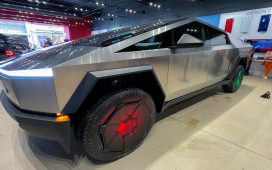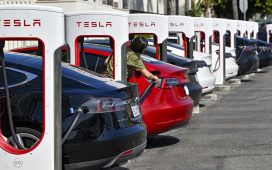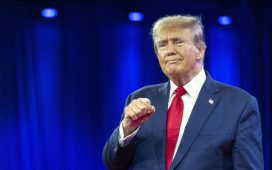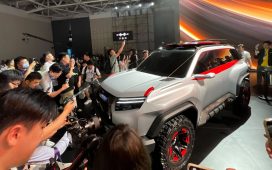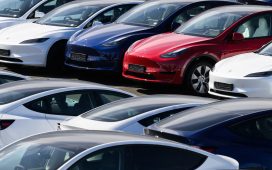Could you tell us which models you decided to discontinue and what was reinvented during those crucial six weeks?
We reinvented the next generation of our electric cars and added C-segment products on body styles that are, let’s say, naturally more inclined to call for a premium price, such as SUVs or crossovers. We killed attempts to create unnecessary proliferation of small cars in poor-margin markets around the globe.
Why did you reorganize Renault Group around brands instead of regions?
I have experienced the Volkswagen Group, and I know the benefit of putting a shirt with a certain color on people. Of course, you have to manage conflict between brands, but it creates a sense of belonging, and it orients all of the team to the outside, to competition and to the market. The organization of Renault was very complex, with a lot of dimensions and matrices. It was focused on functions, but people don’t buy functions — they buy brands.
What is the role of the overall Renault Group if you are now organized by brand?
I am trying to push the power to the brands. But I also want to have full end-to-end responsibility for some of the key functions. Before, some of this governance was intruded on by the fact that you had the region in the middle. Now it’s organized so brands are responsible for the margins and the return on investment. The product planning division will tell them how many products they can have and in which segments.
So product planning will tell Renault you will have, let’s say, seven products, and you should have them in that segment or this segment, and you have your envelope of costs. On the other side, the brands face engineering, which is responsible for the content of the car based on the envelope of cost that is allocated by the brand for product, and the timing, which is very important.
So the dialogue, or confrontation, happens between the people who are close to the market, the brands and the engineers without anybody in the middle. It will also bring the company much closer to the market and make everyone accountable.
And then comes “revolution.” What does that mean to you?
Revolution, for me, is the moment where we will start seeing new value chains activated and bringing some money. You will see a lot of new ideas popping up, or energies and initiatives that were kind of spread around in the organization coming together.
One example is the plant in Flins [outside Paris]. In the announcement of the [cost-cutting] plan, we told some stakeholders that we would use Flins as a place to do, basically, refurbishment of used cars. So I went there with [Renault Chairman Jean-Dominique Senard] and we talked to the people. We came back and gave the team the task to make Flins the best example of industrial reconversion in France, if not in Europe, and to bet on the idea that this place could become the center of excellence in the circular economy.
How will you do that?
We will announce the details soon, but I’m confident that we will be able to match our commitment in terms of employment protection. And on top of that, we will do something that probably will make more money than simply assembling cars, as we are doing today. There is a lot of value in the second life or third life of [an EV] battery. You can put them into a rack and then make a deal with energy companies to use them to stock renewable energy. You could have a process to manage the third life by dismantling the battery, taking out the cobalt and the magnesium and putting in new batteries. That changes the business case of an electric car. I’m not talking about hundreds of euros per battery, I’m talking about thousands of euros per battery in this life cycle.
When is your plan expected to finish?
We shouldn’t be looking for a date. We have seen margins in the traditional [automotive] value chain erode every year. So we need to look at opportunities outside it. We will not do yogurts or perfumes, but we can reintegrate some of the businesses that are adjacent to us. We can tap into new profit pools in these new businesses.
One of Carlos Tavares’ successes in turning around PSA Group was to set benchmark brands to measure the progress of Citroen, DS and Peugeot in terms of pricing, quality, things like that. What are your benchmarks?
For Renault, it’s Peugeot. For Dacia, it’s Citroen.
You joined Renault from VW Group, which has a number of brands that compete for resources within the organizations. If you look at PSA, they have Peugeot, Opel and Citroen all competing for the attention of the organization. Does Renault have enough brands?
I think I have enough work to do in the next two or three years to fix my perimeter, which is Renault, Dacia and Alpine. I know that Dacia is a very, very clear proposition. I know that Alpine has potential, maybe not to compete with the German premium brands, but it’s a business opportunity. You could argue that Alpine is a relatively unknown brand, but it certainly has the pedigree and the heritage. I would give them the target of developing a lineup of products, and I would give them the target to reach breakeven and to pay for racing and all the activities within the Alpine world.
The big issue is obviously Renault. It shares the same problem as all mainstream brands — it’s a little bit in the middle between premium and budget. It’s like this in all sectors. So I think we need to reinvent Renault and make it a modern brand that has a more distinctive proposition to the market.
In China, Renault effectively has exited the passenger-car segment, transferring shares in Dongfeng Renault. Can Renault compete without a presence in that market?
In principle, a company that sees itself as global needs to have a presence in China. It’s true that Nissan is pretty strong in China, but I think that Renault needs to ask itself when and how to one day go back to China. But it can’t be in the traditional way. Right now, I’m trying to make sure to protect the things we have there, a commercial vehicle joint venture [with Brilliance Jinbei] and companies doing electric cars, which are pretty interesting.
With the Zoe, Renault was ahead of the times with a mass-market EV, maybe even too early. Does Renault still have a competitive advantage in electric vehicles?
There were two things that were really a surprise to me when I came to Renault. One was E-Tech, which is potentially the best hybrid solution for European driving conditions. And the other thing is the whole story of electric.
I agree that Renault was maybe a little bit too early [with the Zoe], and was not very consistent afterward. But the good thing is, as we have 10 years in the game, we have a lot of experience. Our dealers know how to sell an electric car. They know how to repair an electric car. They know how to install a charging point at the house of the customer. Our batteries are returning, so we know their performance, how much value they have, how to recycle them. Of course, our competitors can catch up, but it’s not going to take two weeks.
